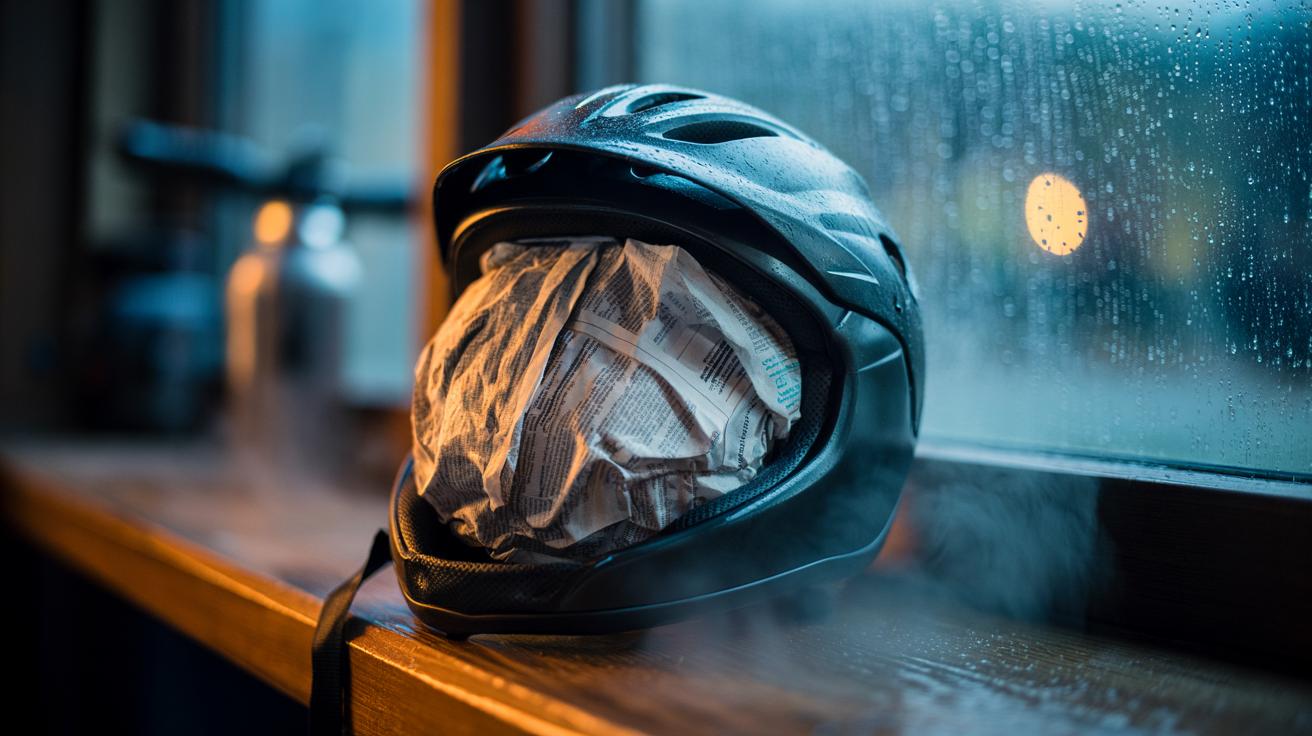In a nutshell
- 📰 Stuffing newspaper into sweaty helmets absorbs moisture and reduces odour overnight thanks to its fibrous structure.
- 🧪 The science: cellulose fibres drive capillary action, wicking sweat and adsorbing volatile compounds that cause smells.
- 🛠️ How-to: lightly crumple newsprint, fill pads and vents, keep the helmet ventilated, and replace damp sheets after 1–2 hours for faster drying.
- ⚖️ Alternatives compared: paper is fastest; pair with activated charcoal or silica gel for stronger odour control, especially during travel.
- 🌿 Care and safety: wash liners regularly, avoid heat that can harm EPS foam, use vinegar-water spritz, and choose uncoated pages for easy recycling.
Across Britain’s clubhouses and kit rooms, there’s a no-fuss trick that riders and site workers swear by: stuff your clammy lid with yesterday’s paper and wake to a fresher, drier interior. The hack sounds quaint, yet the science behind it is robust. Newspaper is a web of cellulose fibres that wicks moisture and traps odour-carrying compounds, making a soggy commute helmet tolerable by morning. In our damp climate, this matters. Dry paper inside a helmet drops humidity quickly, slowing the bacteria that make sweat smell. Cheap, biodegradable, and always at hand, paper remains an elegant solution to a stubborn, sweaty problem.
Why Newspaper Works Inside Sweaty Helmets
At the heart of the method is cellulose—a natural polymer spun into microscopic tubes. These fibres create a maze of capillaries that draw water in through capillary action, spreading sweat across vast internal surfaces where it can evaporate into ambient air. Crumpled sheets add pockets of air that speed drying and increase contact with damp padding. This airy structure lets paper pull moisture away from skin-facing fabrics and into the sheet within minutes. The result is both mechanical absorption and faster evaporation from the paper’s broad surface area.
Odours ride on volatile compounds left by skin bacteria—think isovaleric acid and related molecules. Paper helps in two ways: it reduces humidity, curbing bacterial activity, and it physically adsorbs some volatiles onto fibre surfaces, inks, and mineral fillers. Newsprint is especially effective because it’s thin, pliable, and easy to compress into vents and cheek pads without blocking circulation. Lower moisture equals fewer thriving microbes and a notably milder smell by morning, even without detergents or heat.
How to Use Paper to Pull Moisture Overnight
Start by removing any detachable pads, gently wringing excess water with a towel. Tear or cut newsprint into hand-sized pieces and lightly crumple them to create springy balls. Tuck these under the crown lining, around temple pads, and along the neck roll; avoid compressing so tightly that air can’t move. Add a sheet beneath the chin strap to catch drip points. Position the helmet in a dry, ventilated spot rather than a closed cupboard or kit bag, letting both air and paper do their work.
After one to two hours, replace the dampest pieces with fresh ones to accelerate drying. Leave a final set in place overnight. Inks in modern UK papers are typically soy- or vegetable-based, but test on a hidden area if your liner is pale. Skip hairdryers and radiators—foam and glues dislike high heat. Paper works best as part of a routine: blot, stuff, ventilate, and rotate sheets until the interior feels cool and dry.
Paper vs Alternatives: What Works Fastest
Different materials tackle sweat in different ways. If speed and simplicity win your evenings, newspaper is hard to beat. For travel and long-term care, other options shine. The guide below compares common choices by overnight performance, odour management, and cost.
| Material | Speed (Overnight) | Odour Control | Reusability | Best Use |
|---|---|---|---|---|
| Newspaper | Fast | Good | Single-use | Daily drying at home |
| Kitchen Towel | Fast | Fair | Single-use | Quick fixes, small areas |
| Microfibre Cloth | Moderate | Good | Washable | Routine wiping, liner care |
| Silica Gel Packs | Moderate | Fair | Regenerable | Lockers, travel cases |
| Activated Charcoal Sachets | Moderate | Very good | Regenerable | Odour-heavy helmets |
Newspaper wins on speed and coverage because you can mould it into every contour. Charcoal excels at odours but doesn’t wick liquid sweat quickly; pair it with paper for best results. A two-step strategy—paper for moisture, sachets for lingering smells—delivers a near-new scent without harsh chemicals. For commuters, a stack of old broadsheets by the door is as practical as it gets.
Hygiene, Safety, and Sustainability Considerations
Paper is a stopgap, not a substitute for washing. Remove liners weekly and hand-wash with mild soap; allow to air-dry completely. Between washes, mist the interior lightly with a vinegar-water solution (1:4) or a helmet-safe antimicrobial spray, then stuff with paper. Keeping humidity low denies bacteria the moist conditions they need. Avoid blocking vent channels entirely; airflow is part of the drying system. If you ride daily, rotate two liners to cut dry-time pressure on a single set.
On safety, never place helmets on hot radiators or under direct heaters—heat can weaken EPS foam and adhesives. Reuse community papers or packaging sheets, then recycle them after duty. Choose uncoated or matte pages; glossy stock absorbs less. Think of newspaper as a circular solution: repurposed once to dry gear, then returned to the recycling stream. That blend of thrift and practicality keeps your kit fresh while trimming the waste bin.
There’s a reason kit veterans keep a pile of broadsheets by the hallway: the humble paper does what pricier gadgets can’t, fast and quietly, delivering a drier, calmer-smelling helmet by sunrise. From cycling commutes to site helmets and paddling lids, cellulose remains a trusty ally against sweat and stink. Combine it with sensible washing, ventilation, and the occasional charcoal sachet, and your gear will last longer and smell better. What tweaks—paper type, placement, or add-ons—could make your own overnight routine even more effective?
Did you like it?4.5/5 (23)
